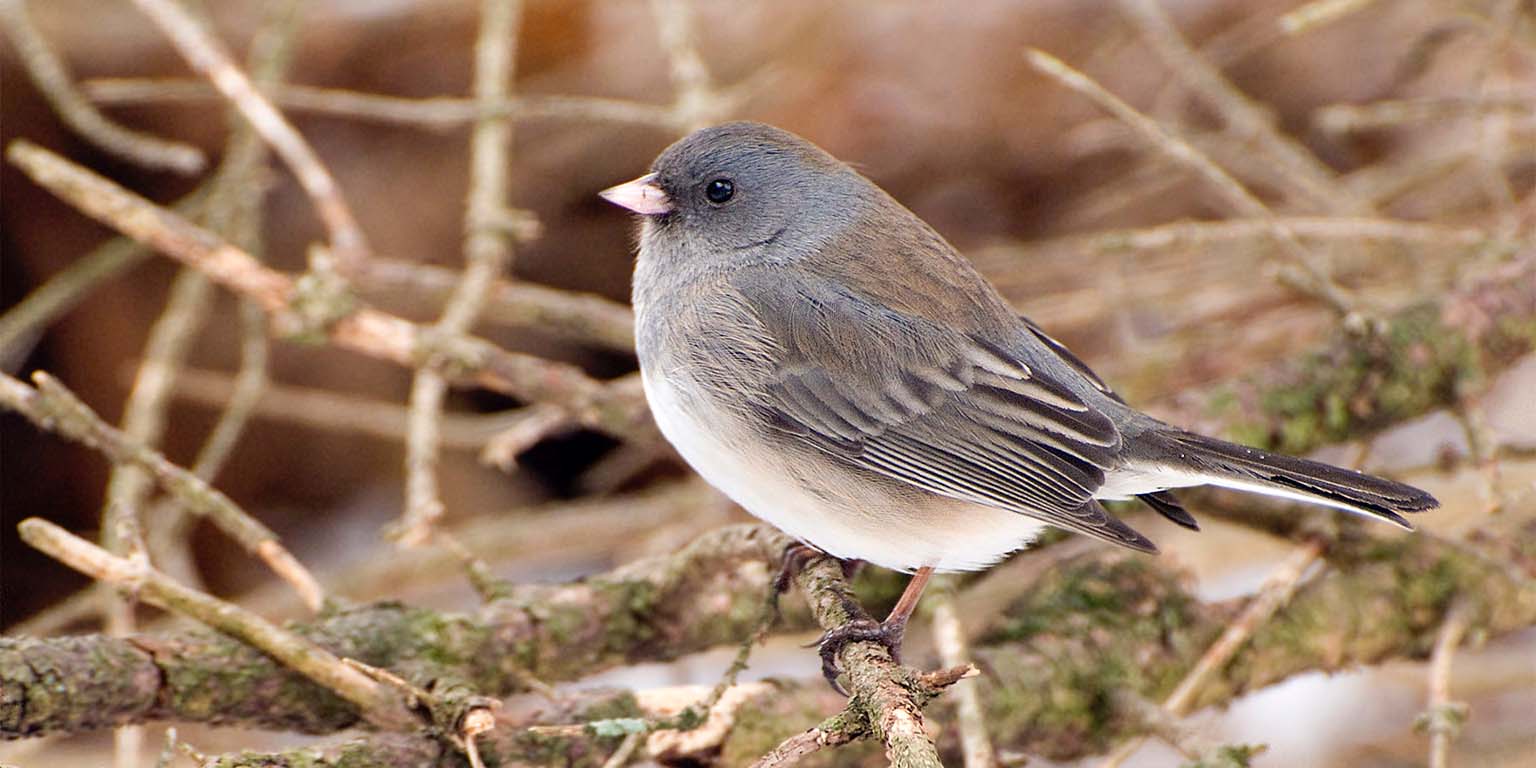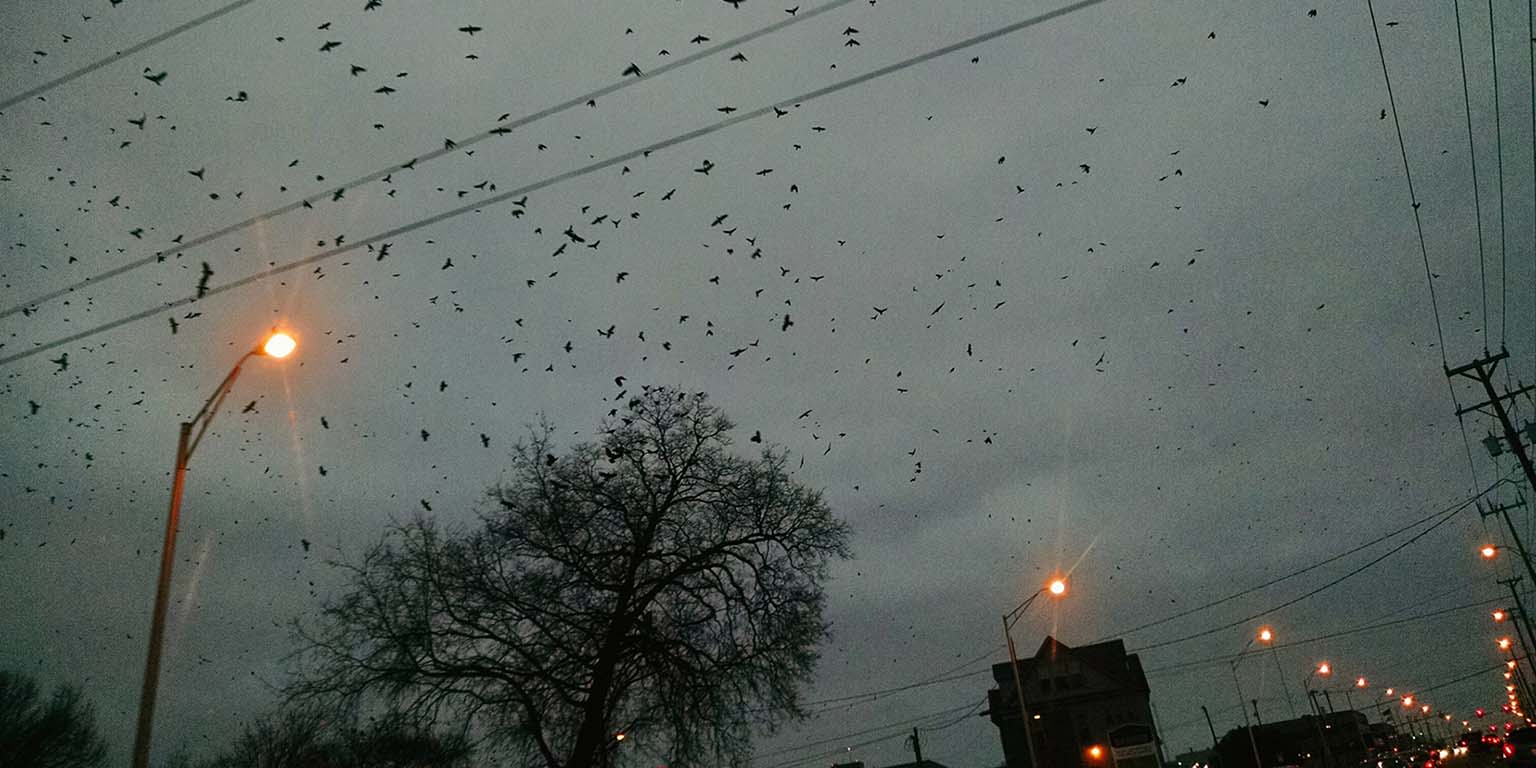Researchers: Ellen Ketterson, Sarah Wanamaker, Malaak Alqaisi, Ariel Tysver, Samantha Diedrich, David Sinkiewicz
Artificial light at night (ALAN) is common in urban environments, and chronic exposure has been shown to influence immunity in wildlife, perhaps increasing the risk of infections. Few studies, however, have addresses ALAN’s effect on immunity in migratory birds.
Researchers at MCB experimentally tested how ALAN affects immunity at the cellular level in relation to the intensity of a parasitic infection in a songbird, the Dark-eyed Junco.
The project
To better understand the effects of artificial light on birds, Indiana University researchers with the Ketterson Lab captured two subspecies of dark-eyed juncos, one migratory and one non-migratory, that share wintering grounds in Virginia. They transported the birds to Kent Farm Research Station in Bloomington, Ind. and subjected them to different light regimes in a lab setting.
In one experiment, the research team subjected the birds to a light regime that mimicked what they would experience in the wild. Some of the birds, however, were exposed to low levels of white light during periods that would normally be marked by the pitch black of night. Researchers observed that the latter regime contributed to the reactivation of dormant infections, such as malaria. The finding potentially has implications for public health as birds serve as a reservoir for human diseases, such as Lyme disease and West Nile virus.
During the study period, the researchers measured the male birds’ reproductive organs, which enlarge during the breeding season, to determine when the birds were starting and ending their breeding cycle. On average, birds subjected to artificial light at night started their reproductive cycle approximately two weeks earlier than birds subjected to darkness, a response that risks placing birds out of step with their environment and threatening breeding success.
The path forward
To further understand the effects of artificial light at night on birds and how to reduce negative impacts, the researchers are conducting a follow-up study to measure impact of ALAN on stress, immune function, and parasite load. The team is also attaching chips to the birds that measure birds’ nighttime activity levels and time of migratory departure to see if migration is also affected by artificial light at night.
Featured media
Publications



